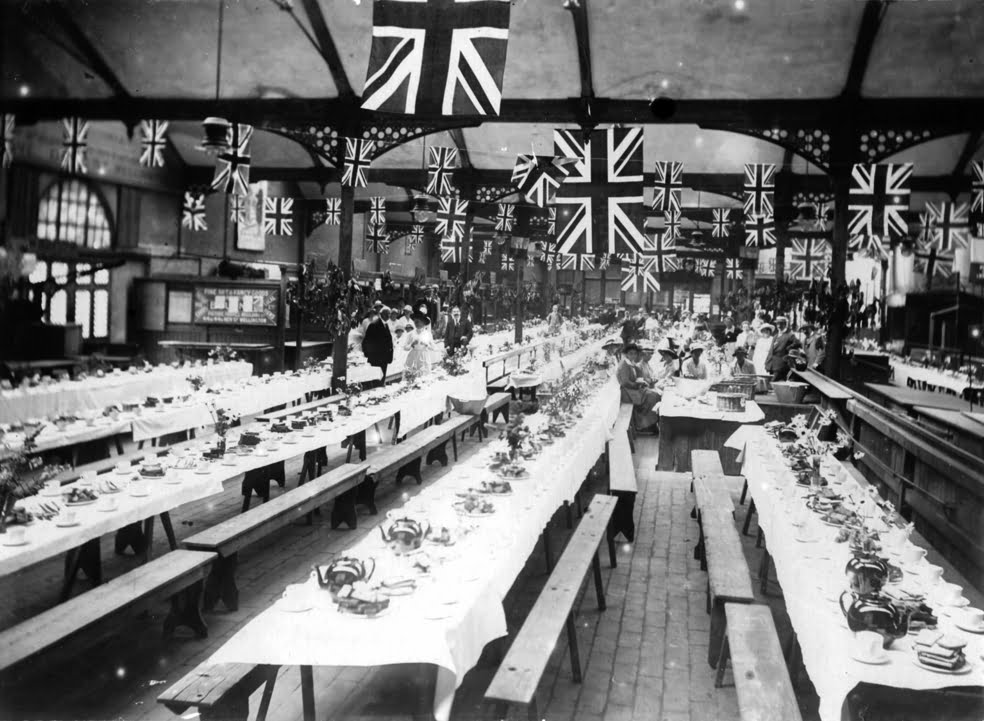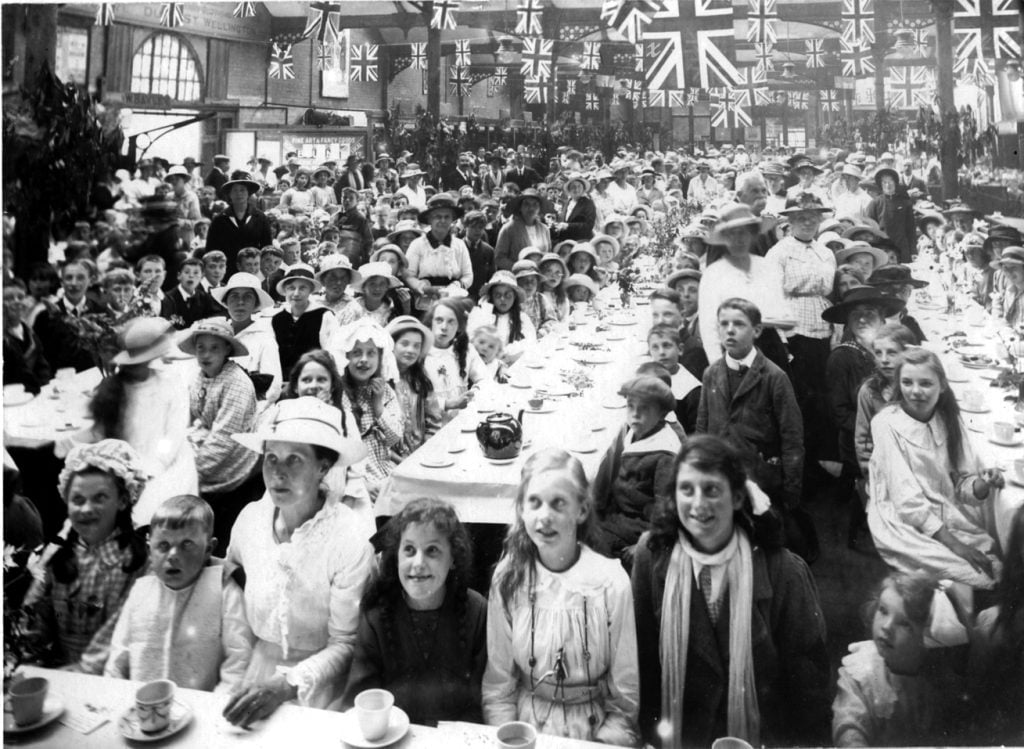Wellington General Market
A Nineteenth Century general market building that served as a temporary garrison during the First World War and became a central focus for Wellington’s official peace celebrations in 1919.
Background
Wellington’s Victorian market complex, which was completed between 1848 and 1866 (and included the local Town Hall), was pressed into service very early in the conflict. Almost as soon as war had broken out it was taken over entirely by the Cheshire Regiment, the Market Hall itself being commandeered for artillery carriages and the sheltered outdoor area (then known as the Potato Market) for horses. ‘Troops come and go continually in the town’ observed the Wellington Journal, ‘men are billeted for the night and go peacefully around the streets giving it the appearance of a garrison town’. The market traders themselves were forced to relocate to the Green next to All Saints parish church (the location of the town’s original Medieval market) but their exile did not last long as the Cheshires continued their fateful journey to the Western Front. While the Territorial Force Armoury in Walker Street ensured a military presence continued in the market environs throughout the conflict and beyond, the precinct’s next major contribution to Wellington’s Great War legacy was a much happier one.

Celebrating the Treaty
In April 1919, Wellington Urban District Council formed a ‘representative committee’ to prepare for the town’s contribution to the national peace celebrations. With the familiar figure of its chairman John Wesley Clift presiding, the new body met for the first time a month later for the purpose ‘of deciding the method of celebrating the signing of the treaty’. The general idea, as explained, was to ‘entertain soldiers and sailors, children and old people’ with a separate event for each group on consecutive days of the long August bank holiday. Dr George Hollies mentioned several stories that had recently appeared in national newspapers highlighting the ‘strong objections’ of servicemen to such events being paid for out of the rates. While he had sympathy with such views (preferring instead to personally entertain them at his home), the rest of the committee felt there was a strong feeling the townsfolk, as taxpayers, should pick up the bill (which the council’s Finance Committee would later recommend should not exceed £300). A motion to that effect was passed and preparations continued at pace for an event in which the Market Hall would play a starring role.

A few weeks after the signing of the Treaty of Versailles on July 18th, and earlier than originally planned, the big day arrived. As a prelude to the celebrations, which began with an unofficial carnival through the main streets, the council issued a programme of events that would begin with a religious service in the grounds of the Market Hall itself. After a procession to and from Apley Park (where ‘sports and dancing will be indulged in’), a ‘meat tea’ would be provided for ‘HM Forces’ back at the Market Hall. ‘Those not fortunate enough to have wives’ it was announced ‘will be allowed to take lady friends as substitutes’! In the event, over a thousand people attended the meal, prepared by the Ladies Committee, while further entertainment was provided upstairs in the Town Hall by ‘Will Dowell’s Minstrels’. Although heavy rain would force the abandonment of another round of ‘outdoor recreations’ at Bowring Park, the Journal was able to report the passage of a ‘vast concourse’ to The Wrekin for an evening bonfire. It was followed by a torchlight procession back into the town ‘coruscated with brilliant ornamentation and was vivacious with spectacular splendour’.
For the Children
Just over a week later, on Tuesday 29th July, the Market was the venue for an even larger event as 1500 of the district’s children crammed into the hall to take their turn in the celebrations, as the Journal excitedly reported:
‘There must have been very few children in Wellington who needed the maternal call to arms of Tuesday morning. It was to be “their day” — one which to the exclusion of everybody else but spectators would be devoted to their own part in the general rejoicing for peace’.


Following a short service on the High School field, in King Street, the younger children ‘clad in summer suits or charming costumes’ were entertained to a Punch and Judy show in Mr EN Turner’s field, while the older ones took part in a swimming gala at the Walker Street baths. At the Market Hall, ‘a tempting tea’, once again prepared by the Ladies Committee, ‘awaited them, the tables being laden with delicious confections and exquisitely adorned with floral embellishment’. To end the day, the whole party decamped to Apley Park where a ‘toy balloon’ release took place and buns were distributed to those assembled.
The final act of the official peace celebrations arrived on Friday 26th September in the form of ‘tea and entertainment to the old people’ — or at least those of ‘65 years of age and upwards’ who had responded to an earlier request from the council to write-in if they wished to attend! In the event, around 180 elderly residents took up the offer and they were entertained at the Grand Theatre in Tan Bank. Afterwards, the Corn Exchange in the Market Hall once again provided the setting for another mass meal organised by a ‘strong committee of lady helpers’. Moving upstairs to the Town Hall, ‘Mr Tom Barnish’s troop from Chester’ rounded out a programme of ‘capital entertainment’ and finally brought Wellington’s two month long programme of peace celebrations to a close.
